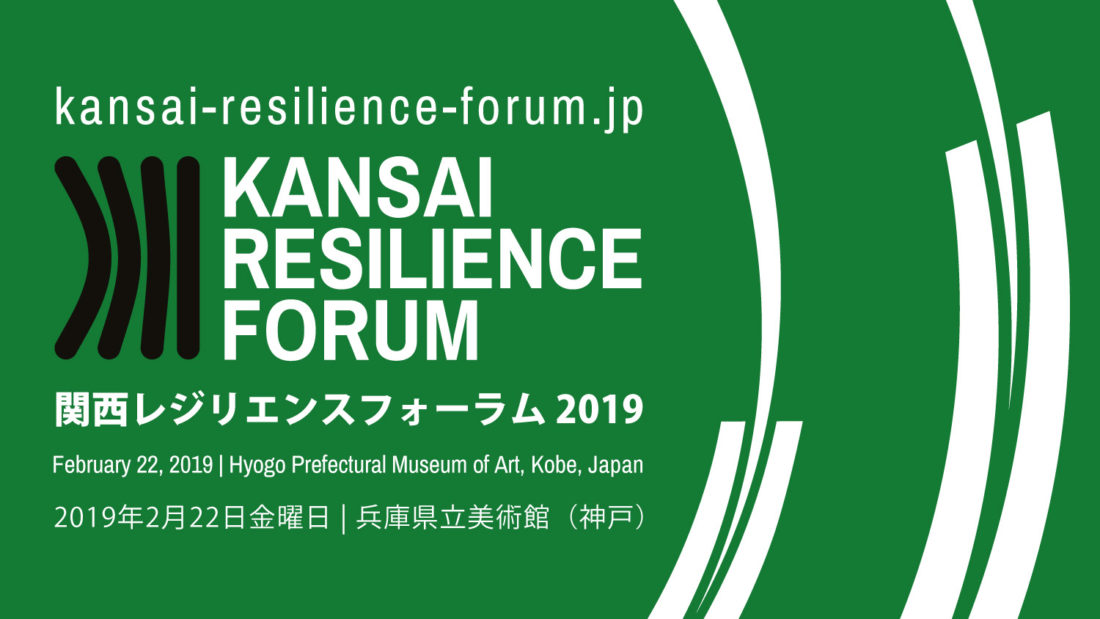Introduction
 On February 22, 2019, the Government of Japan, in collaboration with The International Academic Forum (IAFOR), held the Kansai Resilience Forum 2019, which became a major international and interdisciplinary platform for extensive discussion on resilience and its role in society, the globalising economy and disaster risk reduction.
On February 22, 2019, the Government of Japan, in collaboration with The International Academic Forum (IAFOR), held the Kansai Resilience Forum 2019, which became a major international and interdisciplinary platform for extensive discussion on resilience and its role in society, the globalising economy and disaster risk reduction.
The Kansai Resilience Forum took place at the Hyogo Prefectural Museum of Art, Kobe, comprised of three panel sessions on Disaster Risk Reduction Strategy, Resilience and Society, and Resilience and the Globalising Economy as major topics, and culminating in a Special Keynote Presentation by world renowned architect, Tadao Ando, who designed the event venue following the Great Hanshin Earthquake of 1995 as a symbol of both renewal and recovery.
The Forum was opened by Tomoaki Ishigaki of the Prime Minister’s Office of Japan on behalf of the Government of Japan; and Joseph Haldane, Chairman and CEO of IAFOR, who highlighted the significance and timeliness of the discussion for both Japan and the global community.

Panel I: Disaster Risk Reduction Strategy
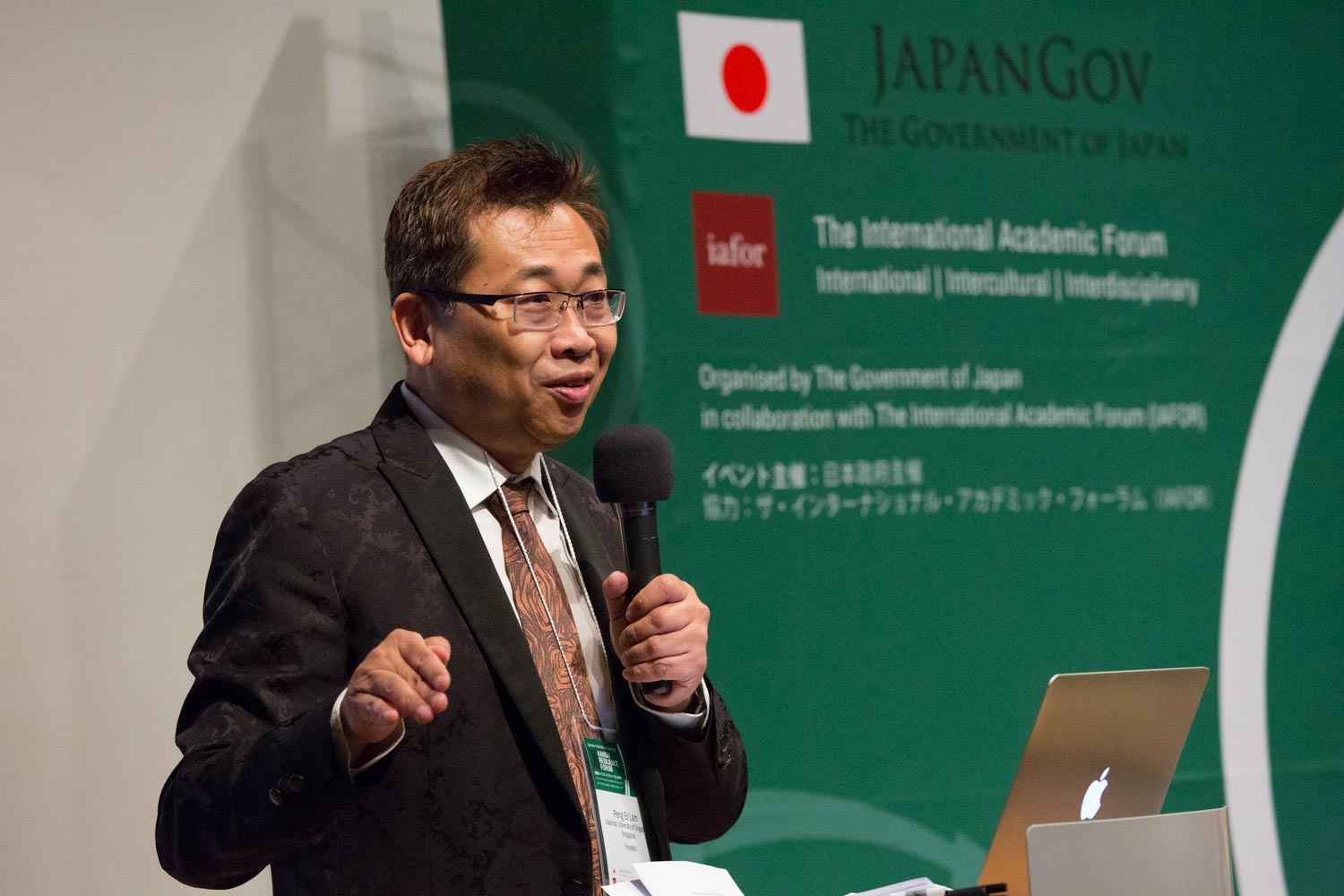
Peng Er Lam, National University of Singapore, Singapore
Panel Session I addressed the issues of disaster risk reduction strategies and how Japan can aid other disaster-prone areas. It was moderated by Peng Er Lam of the National University of Singapore, whose central point was that resilience is created through joint efforts of the local communities, national governments and international collaboration of regions under threat of natural disasters.
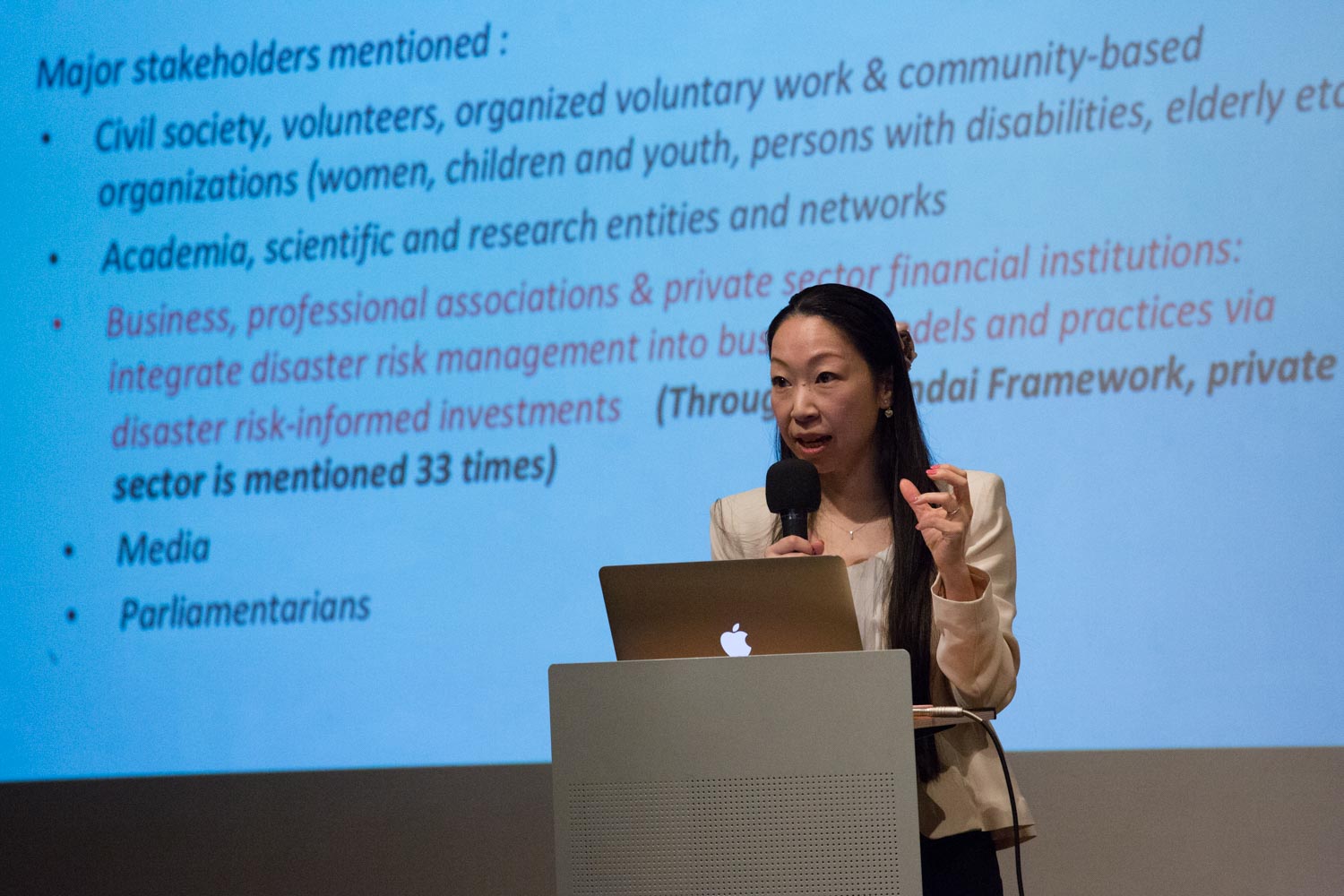
Yuki Matsuoka, United Nations International Strategy for Disaster Risk Reduction (UNISDR)
Yuki Matsuoka, the Country Head of The United Nations International Strategy for Disaster Risk Reduction (UNISDR), Japan, shared, among other issues, the UN’s experience and expertise in disaster risk management speaking about the “shift from considering stakeholders as vulnerable victims to agents of change and focus on empowerment and inclusion” in building up resilience.
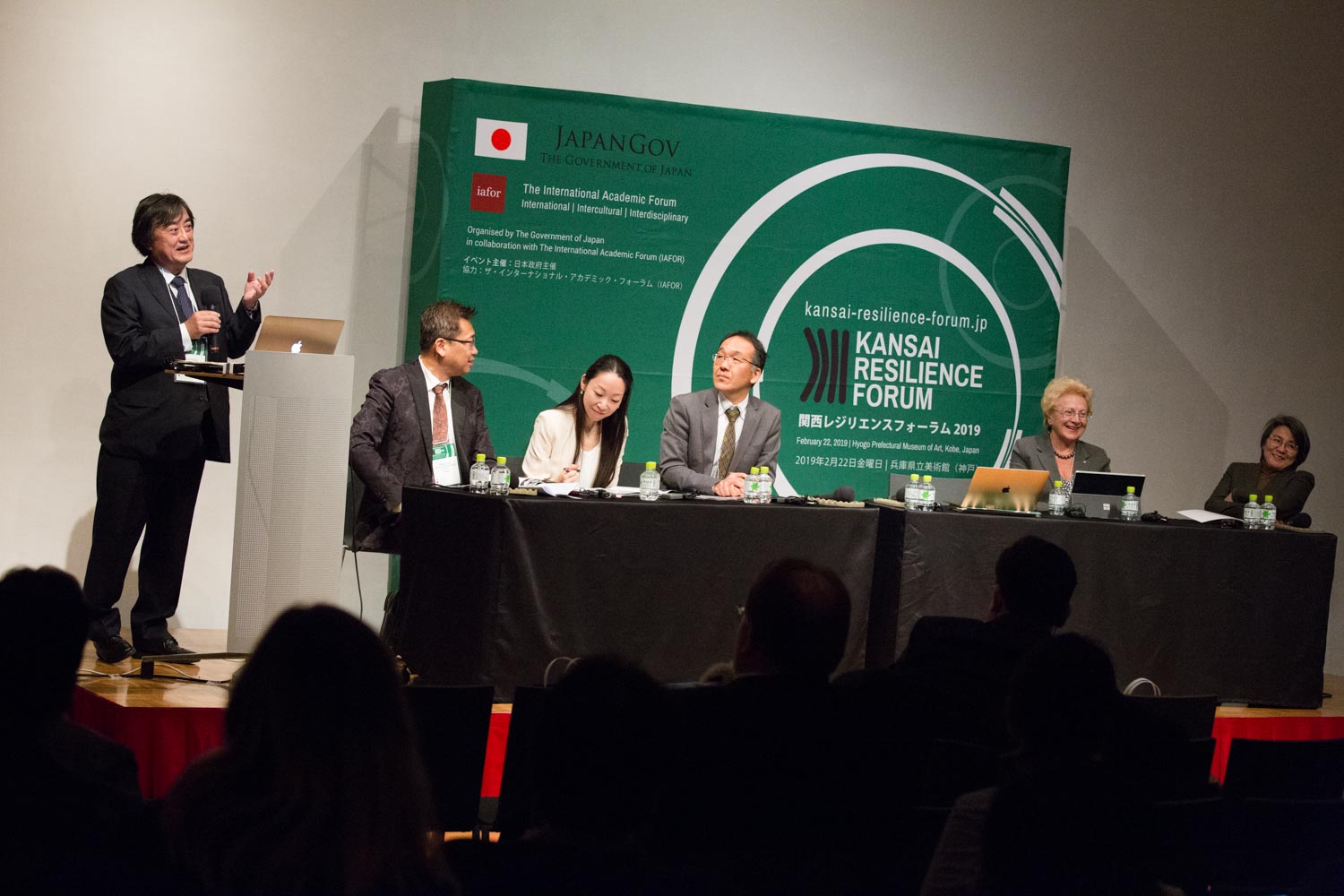
Shota Hattori, Kozo Keikaku Engineering, Japan
Shotta Hattori of Kozo Keikaku Engineering, Japan, spoke about simulated evacuations and the social value of their results which help study social psychology and human behaviour in times when disasters hit people’s habitats.
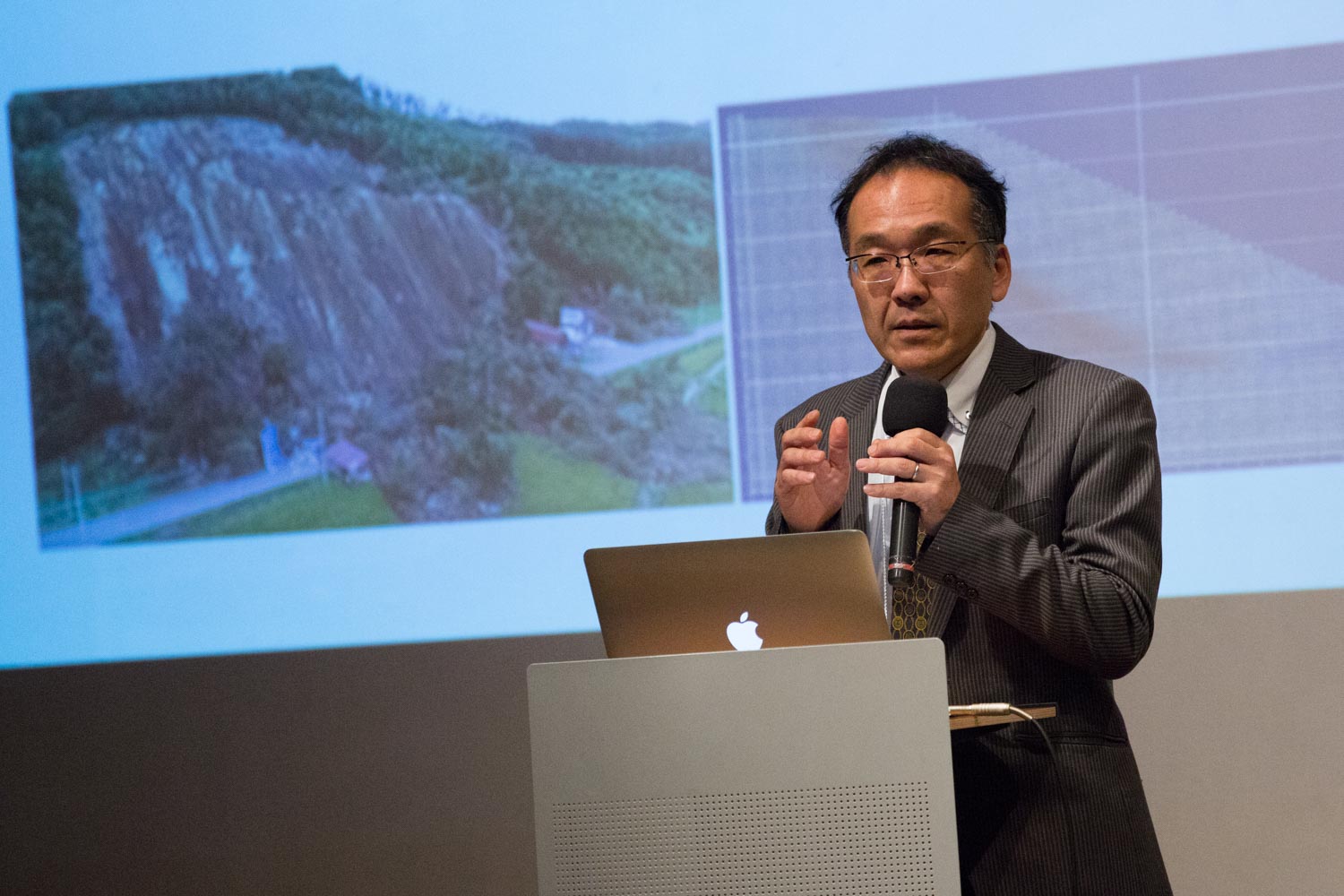
Satoru Oishi, Kobe University, Japan
Satoru Oishi of Kobe University / RIKEN, Japan, gave insight into how supercomputers and other state-of-the-art technologies are used for enhancing urban planning, evacuation and rescue strategies through complex modelling. Kobe is home to the K computer, one of the world’s most powerful supercomputers.
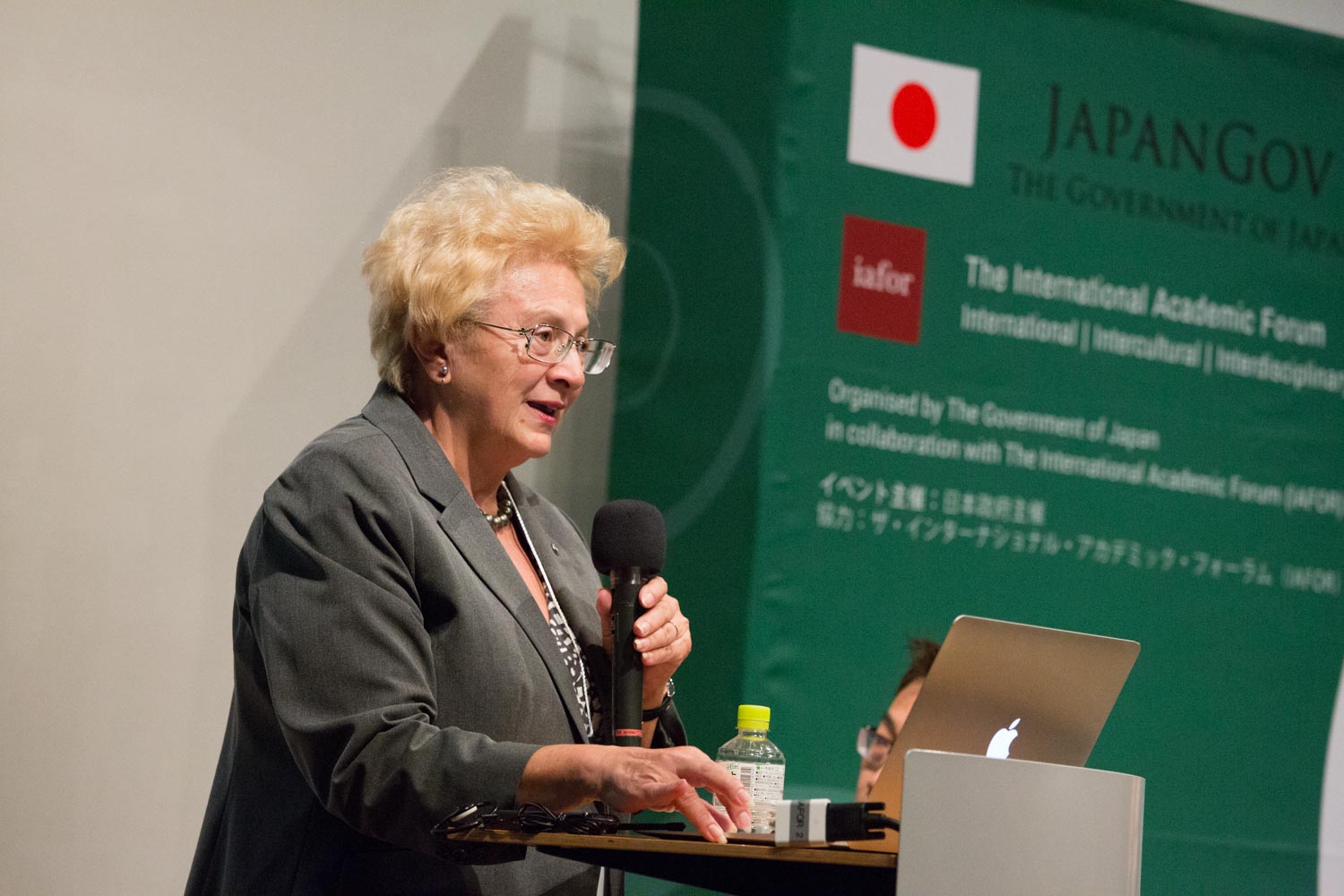
Ljiljana Markovic, University of Belgrade, Serbia
Ljiljana Markovic of the University of Belgrade, Serbia, stressed the role of lifelong education in building up a resilient society. She also laid special emphasis on invaluable support the people of Serbia have been receiving from Japan in terms of rescue assistance, healthcare development and educational exchange, underlining the importance of international cooperation. As a way of recognising this aid, when Japan was struck by the March 11, 2011 earthquake, the Serbian people responded quickly and generously and were among the largest European donors of aid to Japan.

Haruko Satoh, OSIPP, Osaka University, Japan
Haruko Satoh of Osaka University, Japan, summarised the panel by underlying the importance and timeliness of the Forum which has been able to showcase how Japan approaches disaster risk management, how it bounces back, what experience it has and most importantly how this is shared with the rest of the world.
Panel II: Resilience and Society
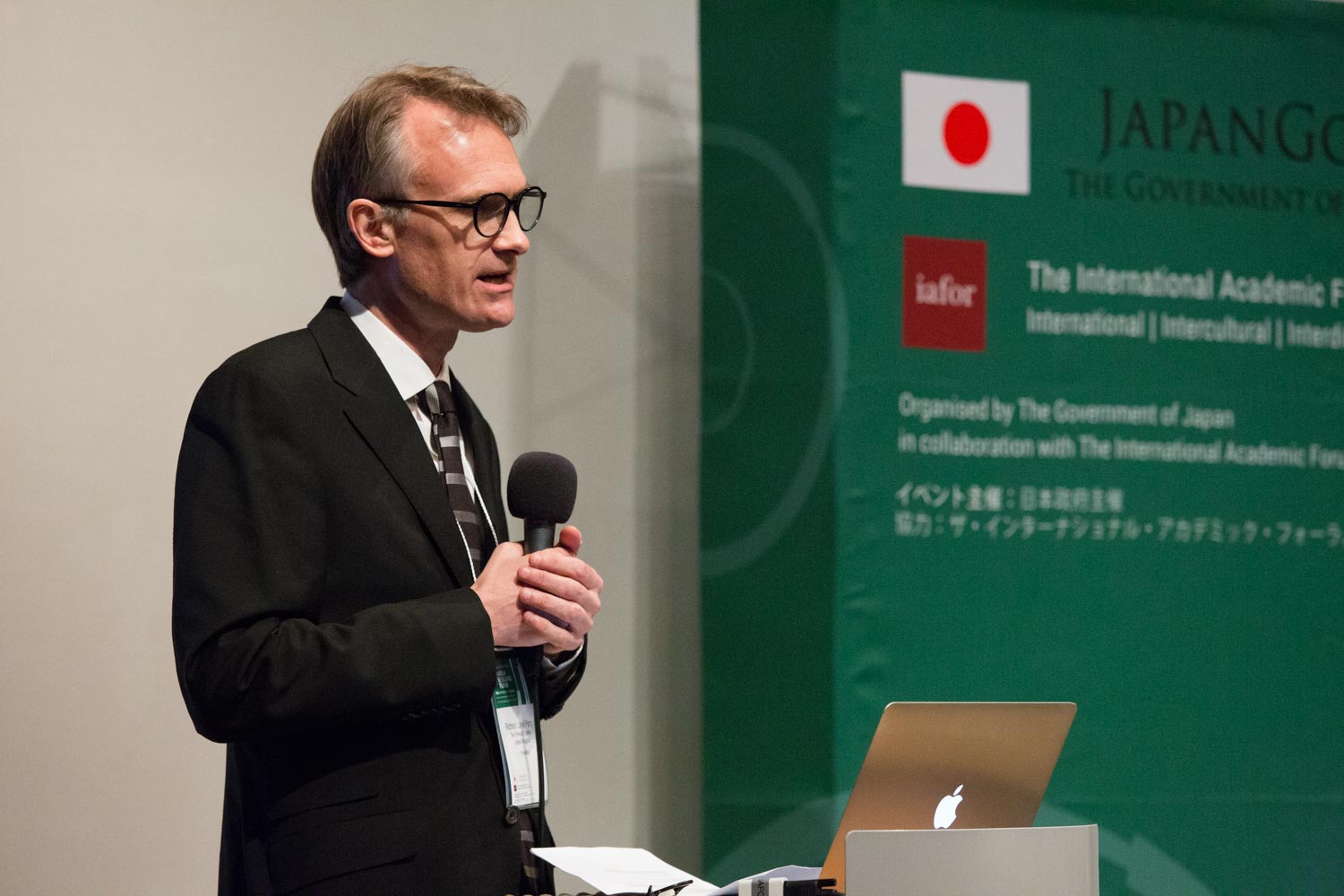
Richard Lloyd Parry, The Times (London), Japan
Panel Session II had Resilience and Society as its theme and was chaired by Richard Lloyd Parry, the Asia Editor of The Times, who has covered tsunamis and nuclear disasters in Japan, among other topics. He looked at the role of resilience in society, both positive and negative, in response to emotionally difficult situations.
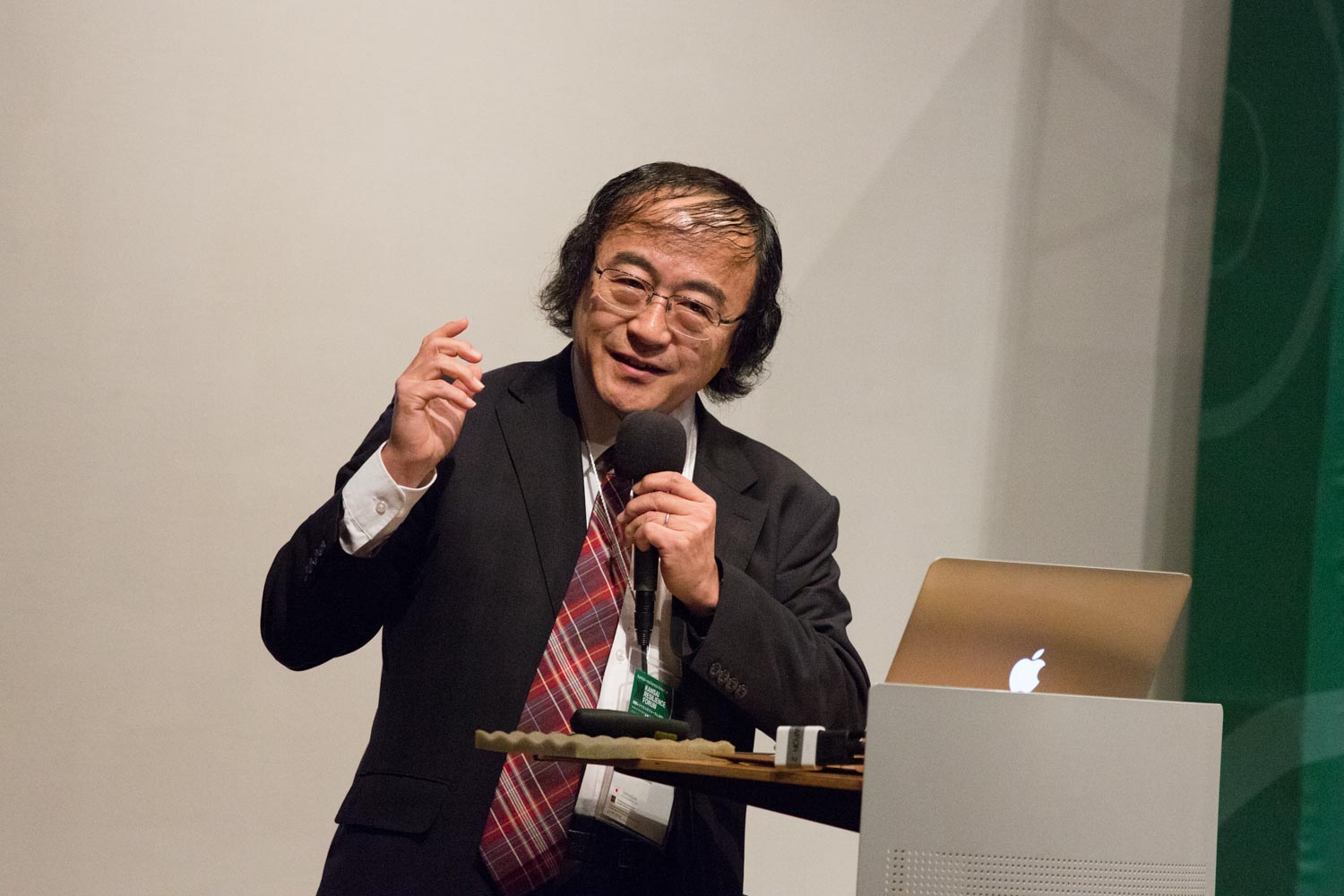
Tomohide Atsumi, Osaka University, Japan
Tomohide Atsumi, a professor of psychology at the Faculty of Human Sciences of Osaka University, Japan, addressed the issue of volunteerism and human support in dealing with the aftermath of natural disasters. He gave an example of the Pay-It-Forward Network, when the survivors of a previous disaster help those of the current one. He spoke of how this volunteerism organically occurred in Kobe in 1995, and of how this has become more formalised in the present day.
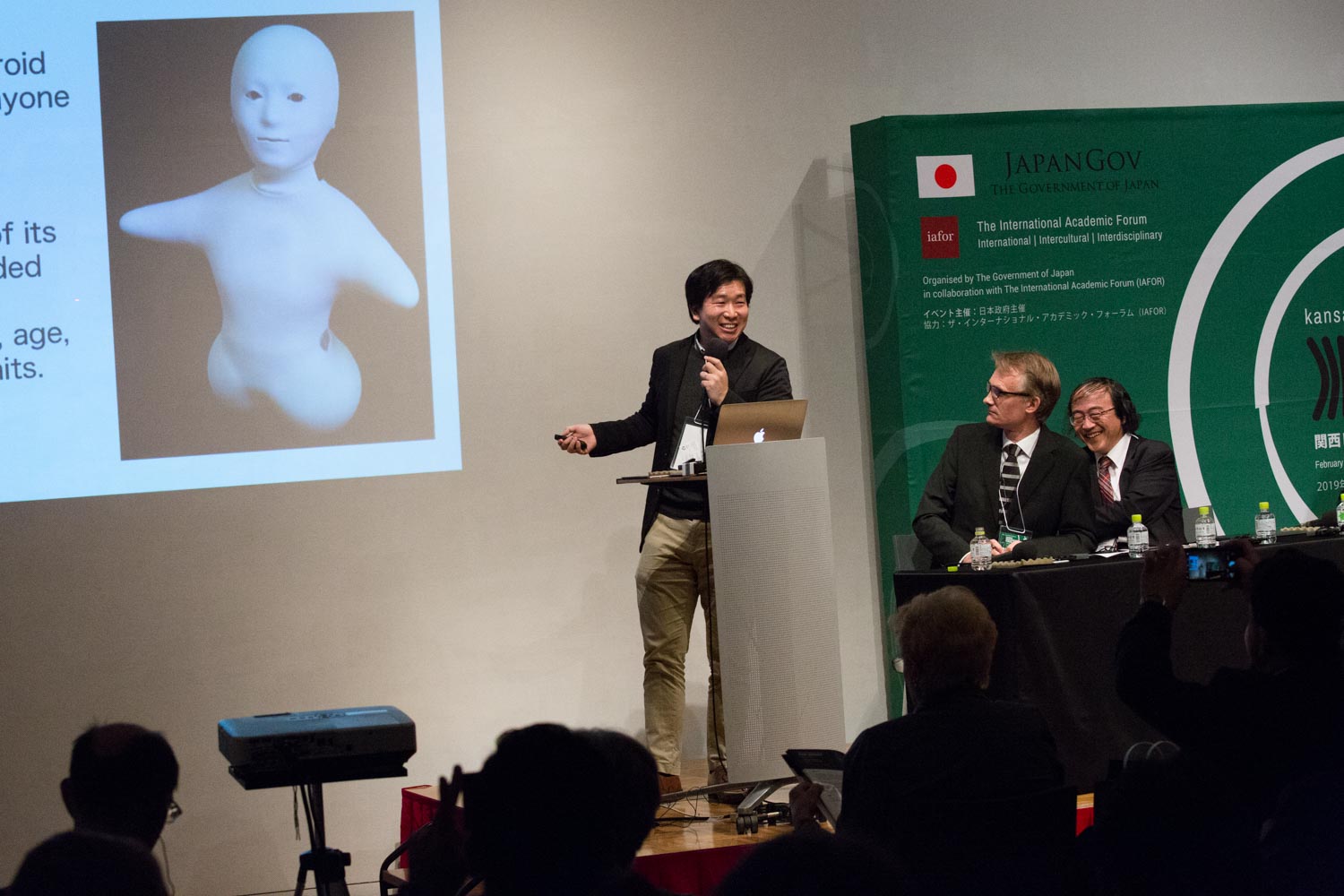
Hidenobu Sumioka, Hiroshi Ishiguro Laboratory, ATR, Japan
Hidenobu Sumioka of Hiroshi Ishiguro Laboratory, Japan, spoke about the help of robots in increasing resilience in society, showcasing the effectiveness of robots through interpersonal touch in interaction with elderly people, children and those who need stress relief. An interesting finding of the Laboratory is that their Telenoids, robots with a minimal human design, can be successfully used across cultures, which was proven in an experiment at a caretaking facility in Denmark. Japan is a world-leader in robotics and AI, and in an aging society, such technologies can help augment the human experience.
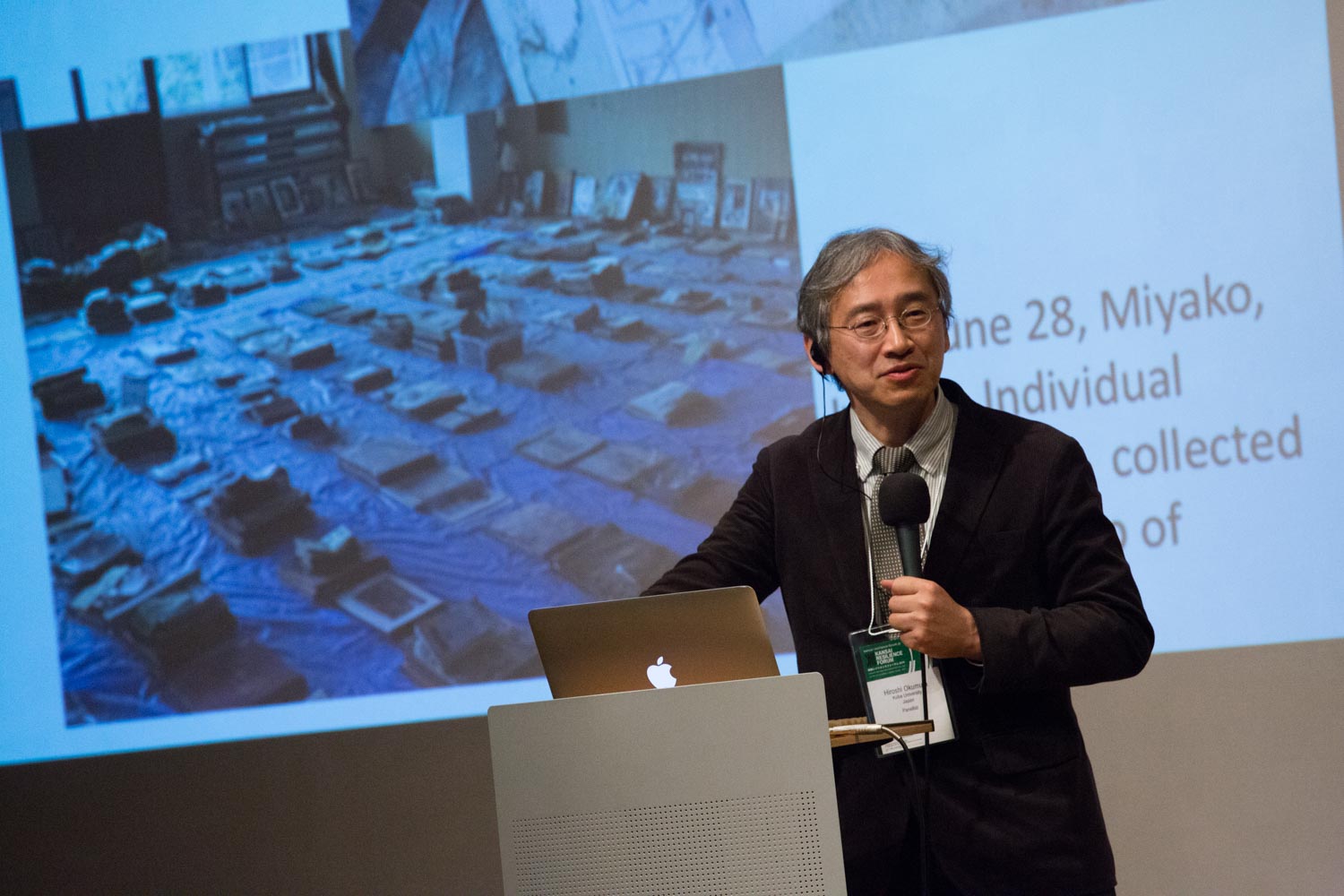
Hiroshi Okumura, Kobe University, Japan
Hiroshi Okumura of Kobe University, Japan, stressed the significance of “memory preservation in a stricken area for the formation of a strong community against a disaster” as historical records are pivotal for accumulating and sharing experience. This is especially important in areas ravaged by both human and man-made disasters and has implications and lessons far beyond Japan.
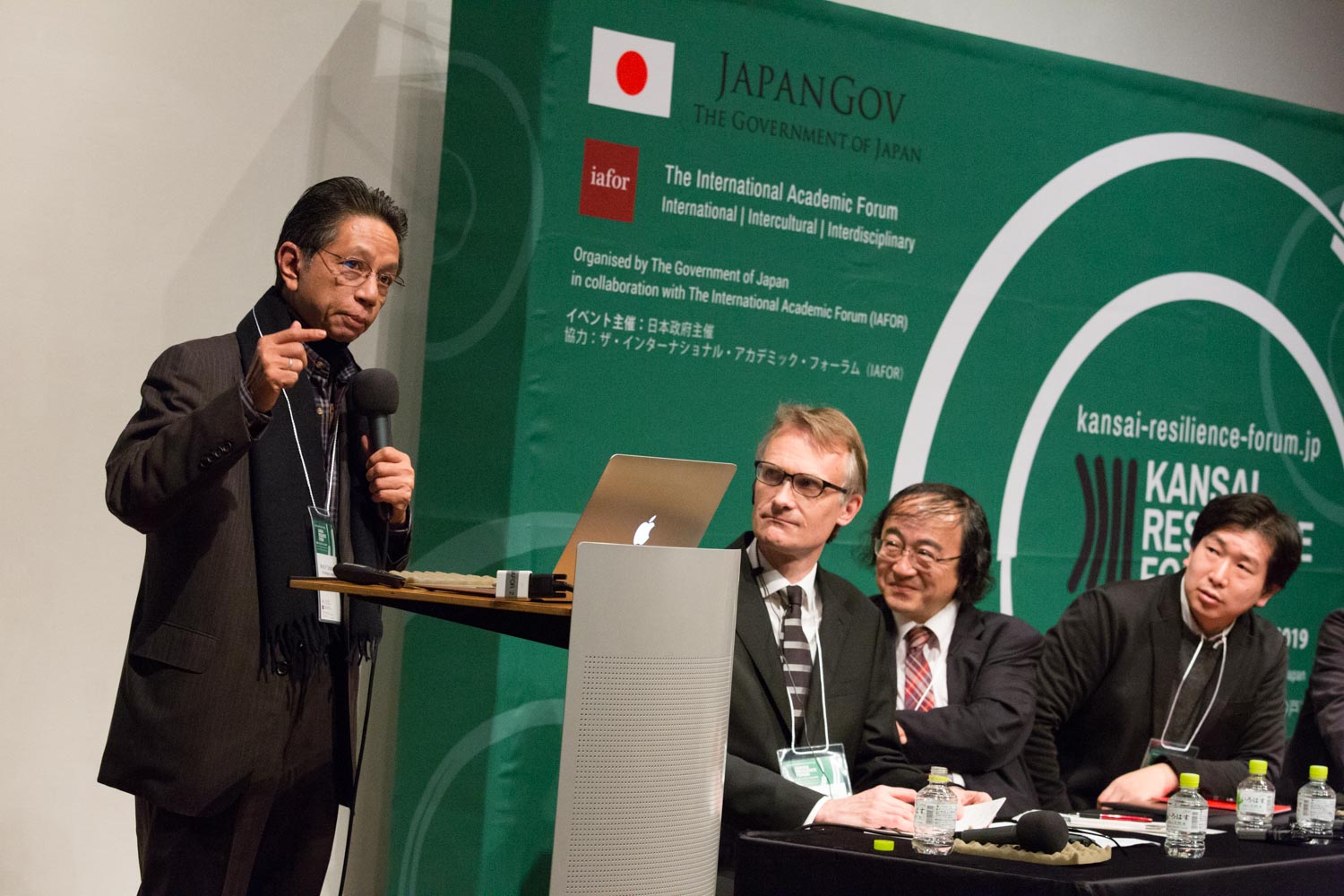
Monty P. Satiadarma, Tarumanagara University, Indonesia
Monty P. Satiadarma of Tarumanagara University, Indonesia, looked at the concept of resilience from a psychological angle, explaining how natural disasters affect people’s mental and emotional state and giving practical advice on how to deal with survivors. Dr Satiadarma is a leading clinical psychologist who treated children suffering PTSD following the 2004 Aceh earthquake and tsunami.

Lowell Sheppard, HOPE International Development Agency, Japan
Lowell Sheppard, Asia Pacific Director of the HOPE International Development Agency, Japan, used the example of tsunami stones, benchmarks that reminded people of the traditional lines below which it is unsafe to build, to examine the role and importance of oral history and education in passing on ancient experiences.
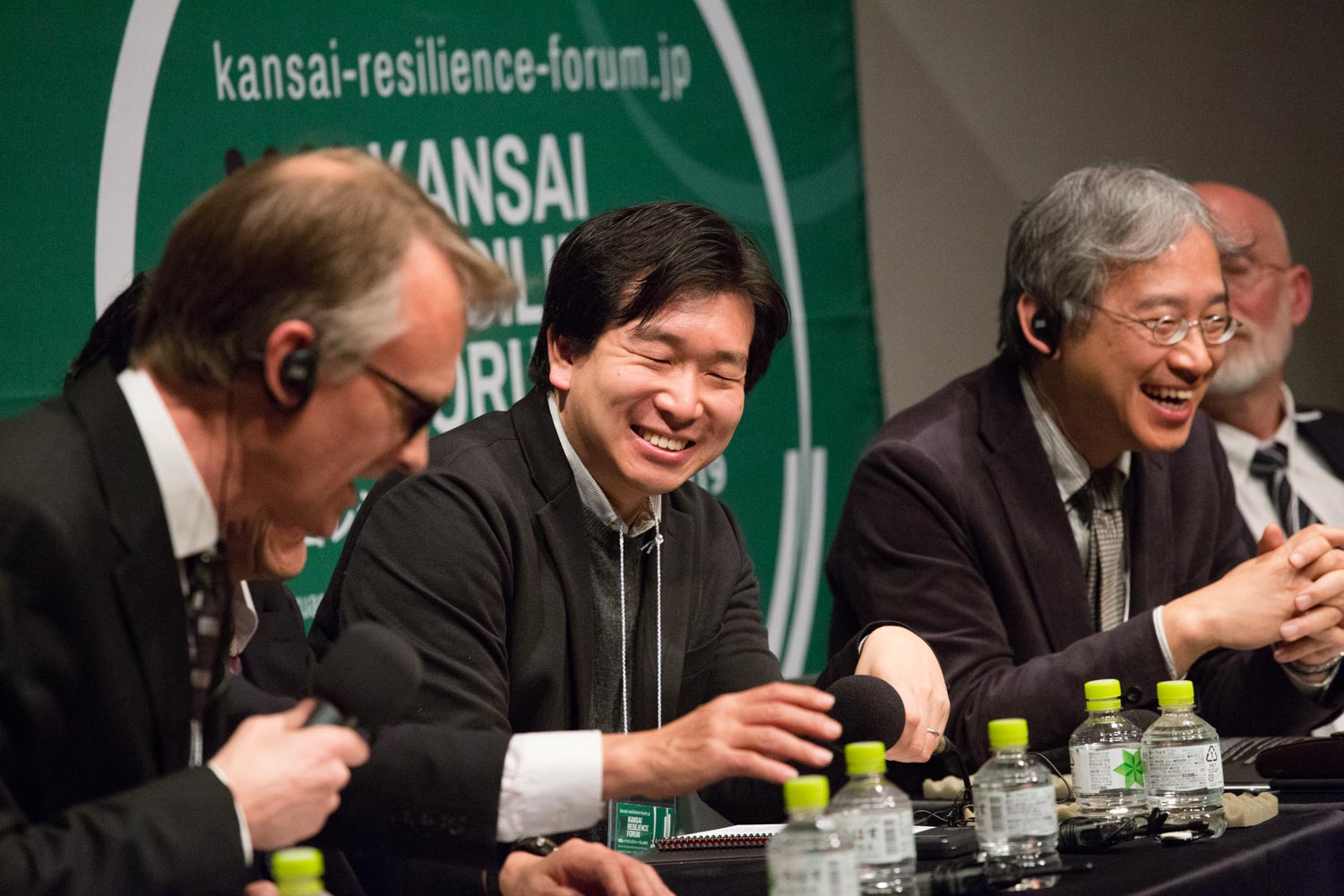
A lively discussion followed the panel addressing the questions of the importance of leadership in resilience, how disasters can change societies, what changes are necessary for Japanese society and how modern technology and robots could be implemented in disaster management in more efficient ways.
Panel III: Resilience and the Globalising Economy
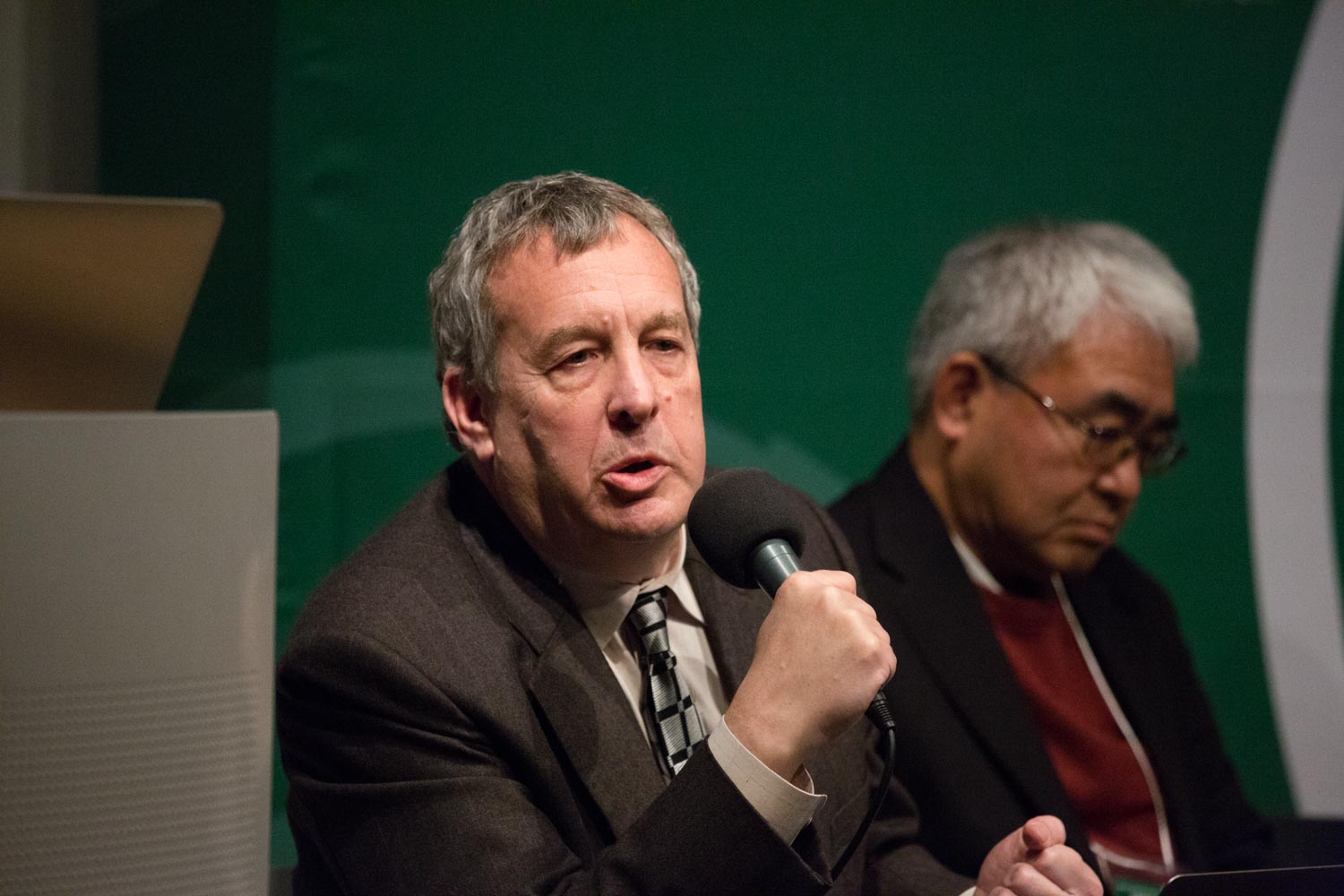
Brad Glosserman, Tama University, Japan
The third panel was dedicated to the correlation and interplay between resilience and the globalising economy. The panel was chaired by Brad Glosserman of Tama University, Japan, who raised the issue of globalisation changing the ways societies are organised. He stressed that facing various problems that modernisation brings, combined with exposure to natural disasters, Japan might well see resilience and promotion of resilience as its national purpose in a postindustrial and postmodern world.
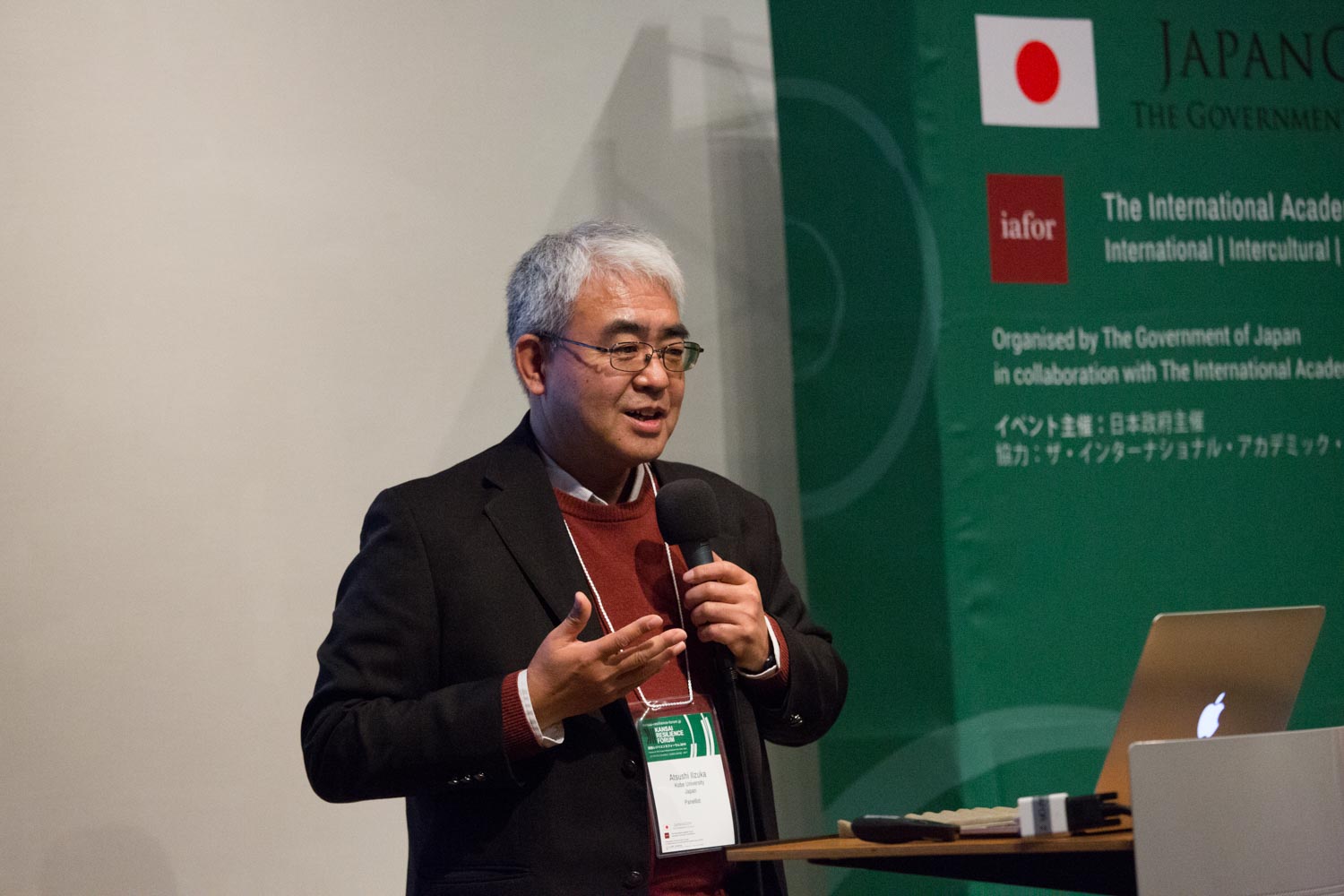
Atsushi Iizuka, Kobe University/RIKEN, Japan
Atsushi Iizuka of Kobe University/RIKEN, Japan, talked about the partial application of big data and super computers in enhancing the resilience of cities and emphasized the importance of private/public partnerships that allow investment in big urban projects to make cities safer, better and smarter.
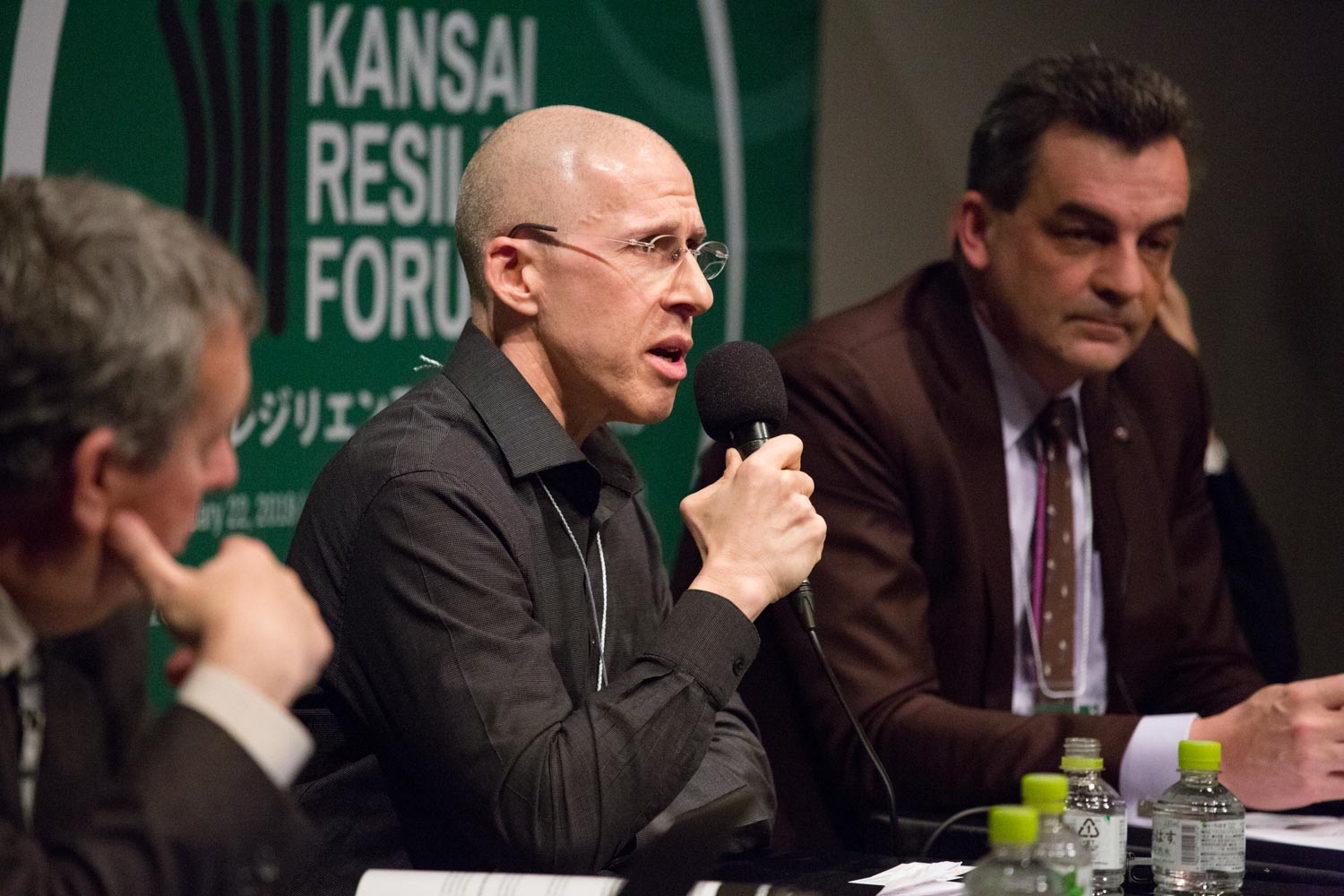
Ray Klein, Tekinvest KK, Japan
Ray Klein of Tekinvest KK, Japan, looked at various perceptions of resilience and its representation in the Japanese society. He outlined that resilience can be traced in how Japan manages its growth and aging of its population, in revitalisation and modernisation of older areas, and in how newer generations approach traditions.

Thomas Mayrhofer, Intercontinental Hotels Group, Japan
Thomas Mayrhofer of the Intercontinental Hotels Group, Japan, spoke on how the hospitality industry can help by becoming an active actor in the community in times of crisis, opening its doors to survivors and providing supplies and shelter to them. He also stressed the major role of communication between national and regional services and international tourists, and explained despite difficulties. Japan was able to quickly recover its key transportation and economic infrastructure from the heavy rain and typhoon last year.
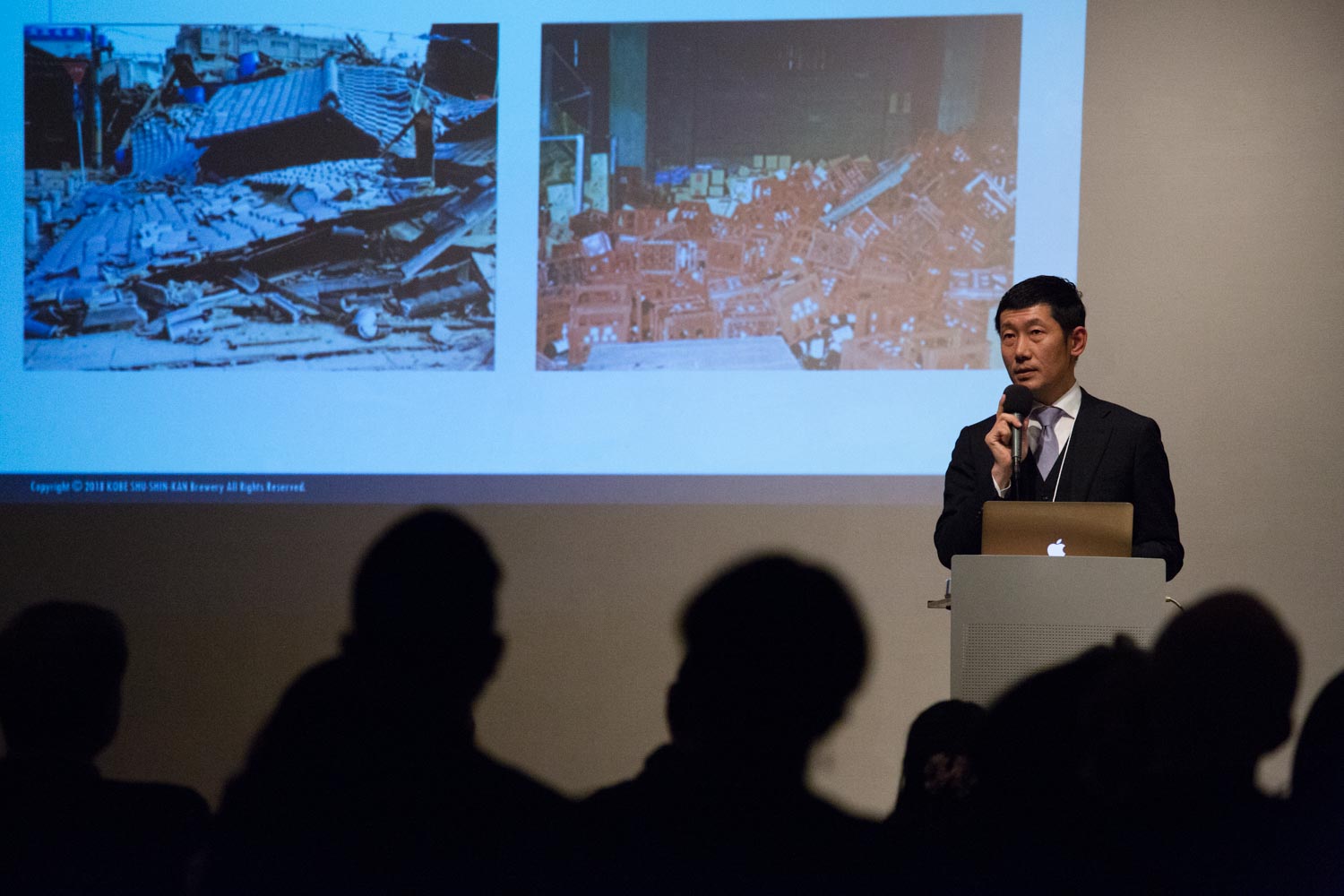
Takenosuke Yasufuku, Kobe Shushinkan Breweries, Japan
Takenosuke Yasufuku of Kobe Shushinkan Breweries, Japan, situated in the largest sake production region in Japan, talked about how damage caused to his brewery was devastated by the earthquake of 1995, and reopened in 1997 after strenuous effort. He underlined the role of business in coping with the aftermath of natural disasters showcasing how the brewery supplied local communities with basic necessities such as water from their processing facility.

Tasuku Kuwabara, McKinsey & Company, Japan
Tasuku Kuwabara of McKinsey & Company, Japan, spoke about how resilience matters for Japan’s development, and its potential in further growth and innovation. He stressed that Japan not only recovers from natural disasters, but also moves further in its development using distinctive technologies that should be shared both inside and outside the country.
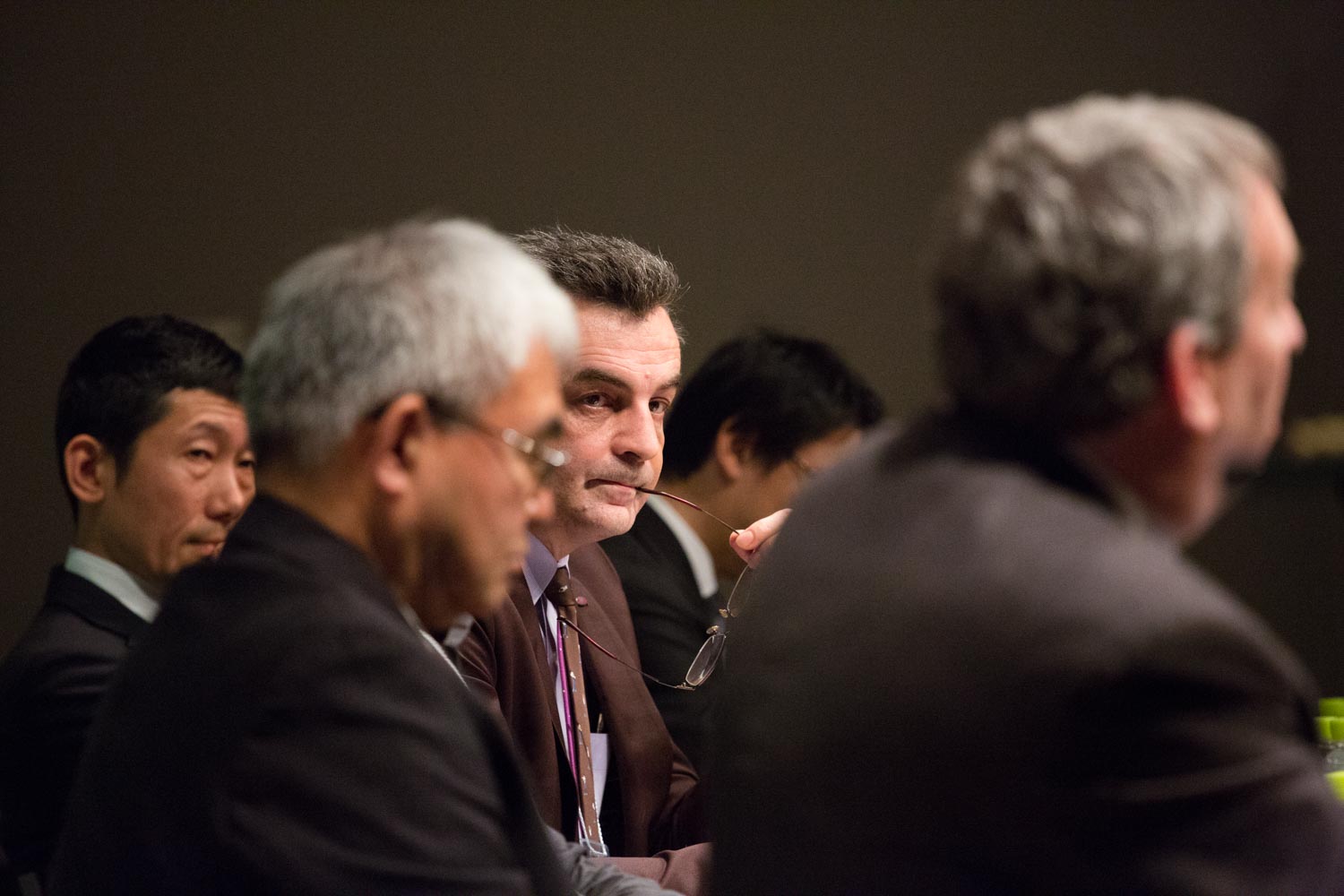
The panel was followed by an in depth discussion on the perception of resilience as a concept in and outside Japan and what is unique to Japan and could be exported to the outside world; whether there is a platform for Japanese communities, businesses and individuals to share the experience gained in natural disasters; whether Japanese resilience is effective for international guests, workers and students inside the country, who should be the agent to enhance resilience and decide how it should be communicated to the local and international community.
Special Keynote Presentation: Tadao Ando
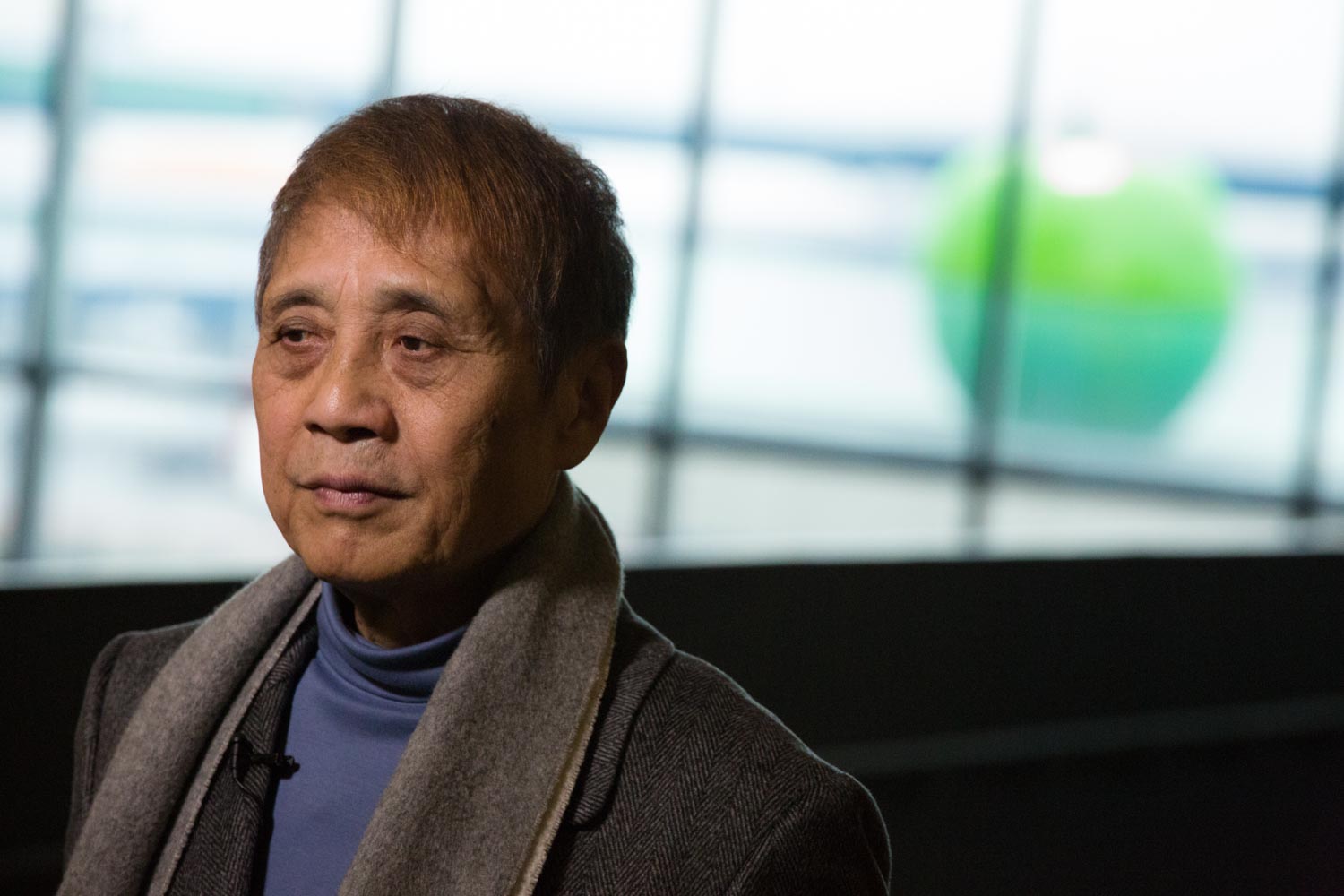
Tadao Ando, Tadao Ando Architects & Associates, Japan
The Forum closed with a Special Keynote Presentation by world-famous architect Tadao Ando, who emphasised the link between art, architecture and resilience and its impact on communities, and the role each member of a community can play in increasing social resilience, stressing the importance of education. The Hyogo Prefectural Museum of Art was designed by Tadao Ando after the Great Hanshin Earthquake of 1995 as a symbol of memorial and overcoming tragedy, as well as one of beauty, looking to the future. The Director of the Hyogo Prefectural Museum of Art, Yutaka Mino, a renowned museum director and curator, moderated the session.
Closing Remarks & Video Recap
The Kansai Resilience Forum provided a platform for re-examining resilience from interdisciplinary perspectives and paradigms, from the abstract concept to the concrete, with contributions from thought leaders in business, academia and government. The discussions were wide-ranging, in-depth and thought-provoking. Participants echoed the views from different perspectives that Japan is always working to improve, leads the world in disaster risk management and response. They also pointed out that Japan can share its experiences and expertise with the world, through its continued engagement in business and development, and in such forums as these.
We thank all of those who took part in the Kansai Resilience Forum 2019, and would like to express our gratitude to Osaka University, Kobe University, and the Hyogo Prefectural Museum of Art.
All images copyright © IAFOR, 2019. All rights reserved.
- Category: News, Special Events

